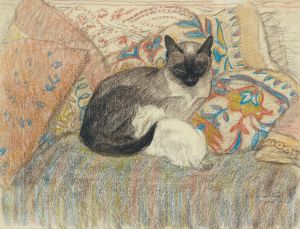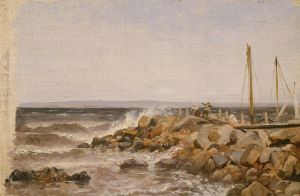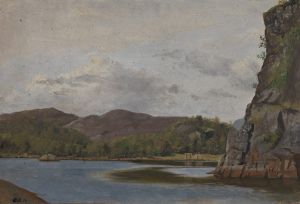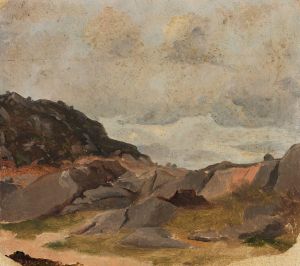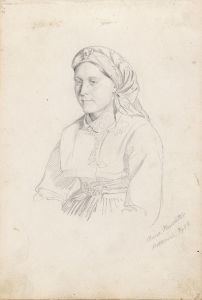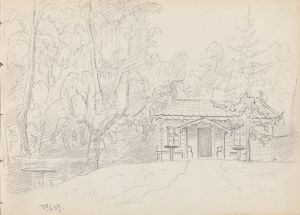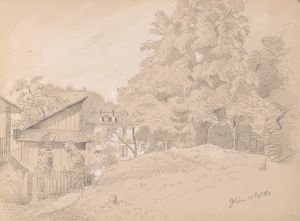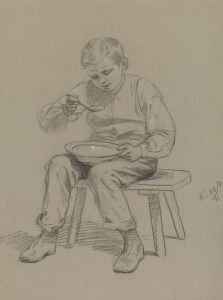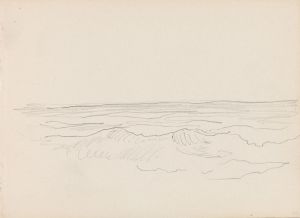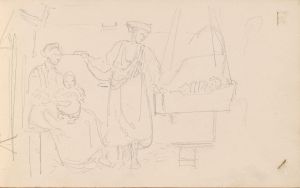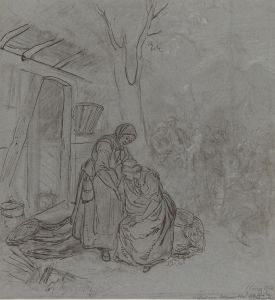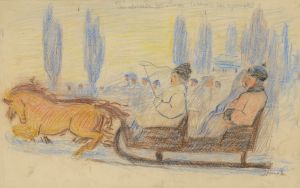
Felespiller
A hand-painted replica of Adolph Tidemand’s masterpiece Felespiller, meticulously crafted by professional artists to capture the true essence of the original. Each piece is created with museum-quality canvas and rare mineral pigments, carefully painted by experienced artists with delicate brushstrokes and rich, layered colors to perfectly recreate the texture of the original artwork. Unlike machine-printed reproductions, this hand-painted version brings the painting to life, infused with the artist’s emotions and skill in every stroke. Whether for personal collection or home decoration, it instantly elevates the artistic atmosphere of any space.
Adolph Tidemand (1814–1876) was a prominent Norwegian painter known for his contributions to the Romantic Nationalism movement in Norway during the 19th century. His works often depicted Norwegian folk life, traditions, and rural culture, reflecting a deep interest in the everyday lives of the people and the landscapes of his homeland. One of his notable paintings is Felespiller (translated as The Fiddler), which exemplifies his focus on Norwegian cultural identity.
Felespiller was painted in 1848 and is considered a significant work within Tidemand's oeuvre. The painting portrays a fiddler, a central figure in Norwegian folk culture, playing his instrument in what appears to be a rural setting. The fiddler is depicted with a sense of dignity and focus, emphasizing the importance of music in Norwegian traditions and community gatherings. The scene is rendered with meticulous attention to detail, characteristic of Tidemand's style, which combines realism with a romanticized view of rural life.
The painting reflects Tidemand's broader artistic mission to document and celebrate Norwegian heritage during a time when the country was seeking to establish its cultural identity following its union with Sweden in 1814. By highlighting traditional elements such as the fiddle, which is closely associated with Norwegian folk music, Tidemand contributed to a growing sense of national pride and cultural preservation.
Adolph Tidemand often collaborated with Hans Gude, another prominent Norwegian artist, on larger landscape and genre scenes. However, Felespiller is an example of Tidemand's solo work, focusing on the human figure and cultural themes rather than expansive landscapes. The painting is part of a series of works that explore the lives and customs of Norwegian rural communities, which were rapidly changing due to modernization and urbanization during the 19th century.
Today, Felespiller is recognized as an important piece of Norwegian art history. It is housed in the National Museum of Art, Architecture and Design in Oslo, Norway, where it is part of the museum's extensive collection of works by Tidemand and other notable Norwegian artists. The painting continues to be appreciated for its historical and cultural significance, as well as its artistic quality.
Adolph Tidemand's legacy as a painter lies in his ability to capture the spirit of Norway's people and traditions, and Felespiller remains a testament to his dedication to preserving and celebrating his country's cultural heritage.





